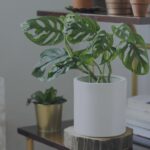How To Take Care Of Your Indoor Plants
Indoor plants are the best way to give your indoor spaces an alive and well-being feel. Plants are known for their mood boosting qualities, which is perfect if you need some uplifting energy on an otherwise dreary day! Some people like indoor plants because they’re easy to take care of, provide health benefits and can be used in a variety of decor themes. Indoor gardens are great for those who don’t have much yard space and live in areas with cold winters. If you’re new at caring for plants inside your house, here we will give you some tips and tricks, for your green companions to thrive!

Light is essential for your plants!
The most important thing to remember about plants is that they need as much sunlight as you need water and food. If you put them in poor lighting conditions, it’s equivalent to feeding a child an unhealthy diet and will result in slow growth or even death for some species of houseplants.
Plants have different needs, so you need to consider where the plant species originates from. For example, succulents or cacti are usually found in lighter regions, and they require quite a bit of direct sun indoors. While plants such as Bird’s Nest ferns and Boston Ferns come from more shaded areas that must be placed away from windows with plenty of light.
The best place for a plant is near some light. So, if you have windows in your home and want the perfect decorating touch, then look no further than adding an indoor garden! As plants grow, they may require more sun, so be sure to move them towards brighter areas or rooms.
Indoor plants are a great way to add life and greenery into your home, but they need special care. To keep them healthy, you should choose easy-to live with types, such as plants who need lesser light or water.
What about water?
To make sure you’re watering your plant correctly, follow these easy tips:
- Feel the soil: The most important thing to remember about watering your plants is that you should feel their soil. If it feels dry, then give them some water! Some plants need more attention than others. Use you senses when deciding how often a certain type requires water depending on its season or growth rate (some might be watered every 2 days while others require water only weekly).
- Do it the right way: There’s a right way to water your plants. First, always use warm water because it will be absorbed more quickly by the soil and it is less likely to cause infection or fungus problems. You want to slowly dampen your soil so that it is more is gonna be absorbed. But you also don’t want too much moisture on any one spot. Otherwise roots can get overwhelmed by all the extra liquid running through them. You need a balance between dryness and wetness.
- Water for Succulents: Succulents are great because they’re low maintenance. But, just like with anything in life, you have to take care of them! Most people assume that Succulents require very little water and while they can go long periods without watering (especially if planted on their natural soil), it’s recommended to feel the soil, if it is completely dry, pour in water. This is necessary, maybe every 2 weeks, but make sure to be aware of the dryness in the soil.

How to diagnose trouble
Diagnosing plants is a complicated process. Diagnosis begins with the overall health of your plant and then moves onto specific areas that may need attention. Possibly you observe leaves dropping or turning yellowish-brown in color before death occurs. There could even still be hope for recovery if things aren’t too far gone!
If you observe:
- Rotting Roots: If you can see the roots coming out of the pot, then it is time to water less often. Roots rot when they are exposed to water for too long.
- Leaves changing colors: Some leaves may appear yellow during an active period of nutrient deficiency. It could be too hot, cold or dry, which leads to the plant’s inability to absorb nutrients and causes cells in leaf tissue to break down.
- Leaves falling down: If you’re noticing that your plants are dropping their leaves, it could be for many reasons. One of the most common ones indoors, is not enough light. Plants don’t see like us and have to rely on food, which comes from sunlight or other sources such as artificial lighting.

Other important tips to consider when buying a new plant
- When bringing home a plant, make sure that you look for any damage before placing it in an enclosure where its health can be compromised.
- It is important to change the pot and add fertilizer to your new friend. The nutrients will help your plants grow strong roots, which in return makes them healthier overall!
- Don’t forget: ALL plants need light!
- When you first set them up, make sure that the soil in their container drys out completely before watering with normal household water.
- Planting your plants in a pot with adequate drainage will help ensure that they stay healthy.
Conclusion: It’s more than just a green thumb!
It’s more about how much you pay attention to your plant. We all have the ability to grow healthy indoor plants, but understanding the basics will make sure that they’re happy in their new home. The first step is to know what kind of light each type needs, second giving the right amount of water and third, make sure they get the necessary nutrients.
Indoor plants can be found in a variety of shapes and sizes. Some, thrive only with a lot of effort, while other household varieties, need less care than you might think!





